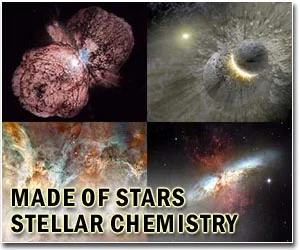
Star Formation’s Secret: It’s All About Location, Location, Location!
For decades, astronomers believed that the amount of gas in a galaxy dictated its star-forming capacity. But a groundbreaking new study is turning that assumption on its head. It's not just about the quantity of gas, but its location that truly fuels the birth of new stars.
The research, a part of the massive WALLABY survey (Widefield ASKAP L-band Legacy All-sky Blind Survey), has revealed that galaxies forming stars tend to have dense accumulations of atomic hydrogen gas in their stellar regions, rather than just large total gas reserves. This challenges the long-held belief that galaxies with abundant gas reservoirs would naturally produce more stars.
"It was very exciting to see a correlation between star formation and where the atomic hydrogen gas is located," said Seona Lee, PhD candidate at The University of Western Australia's ICRAR node, who led the study. The findings, published in the Publications of the Astronomical Society of Australia (PASA), are based on data from around 1,000 galaxies mapped by CSIRO's ASKAP radio telescope. This is a significant jump from previous surveys that only assessed gas distribution in a few hundred galaxies.
ASKAP's high-resolution capabilities allowed the team to pinpoint the location and density of atomic hydrogen gas with unprecedented precision.
Professor Barbara Catinella, ICRAR Senior Principal Research Fellow and co-leader of the WALLABY survey, uses a relatable analogy to explain the concept: "Making stars is like baking a cake. Different cakes need different amounts of flour, but to bake a cake properly, you focus on the flour in the bowl—not the leftover flour still in the package. Similarly, studying star formation requires us to measure the atomic gas in the regions where stars form, rather than looking at total gas content across the galaxy."
This research helps solve a prevailing puzzle: why some galaxies with vast gas reservoirs form relatively few stars. It appears that much of their gas may be sitting unused in the galactic outskirts, too far from the regions where stars can actually be born.
The implications of this study are profound. Understanding where the gas is dense enough to trigger star formation, rather than solely focusing on the total galactic gas content, is crucial for unraveling the mysteries of how stars are born and how galaxies evolve. The team examined both radio wave and optical data to assess gas levels in star-forming regions, emphasizing the need to examine the atomic hydrogen gas exactly where stars are actively coming to life.
So, the next time you look up at the night sky, remember that it's not just about the amount of galactic gas, but its strategic positioning, that paves the way for the dazzling celestial displays we witness. What other cosmic assumptions will be challenged next? Let us know your thoughts in the comments below!